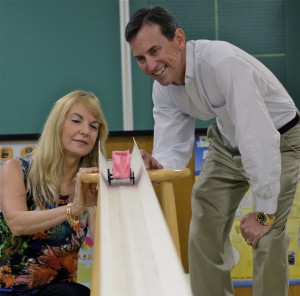IIHS-HLDI collaborates with UF College of Education on new educational website for science teachers and students
The Insurance Institute for Highway Safety collaborated with the UF College of Education to create a new educational website for science teachers and students. The site is a free, online resource featuring hands-on science activities designed by science educator Griff Jones with focus on topics such as inertia, momentum, impulse and energy.







